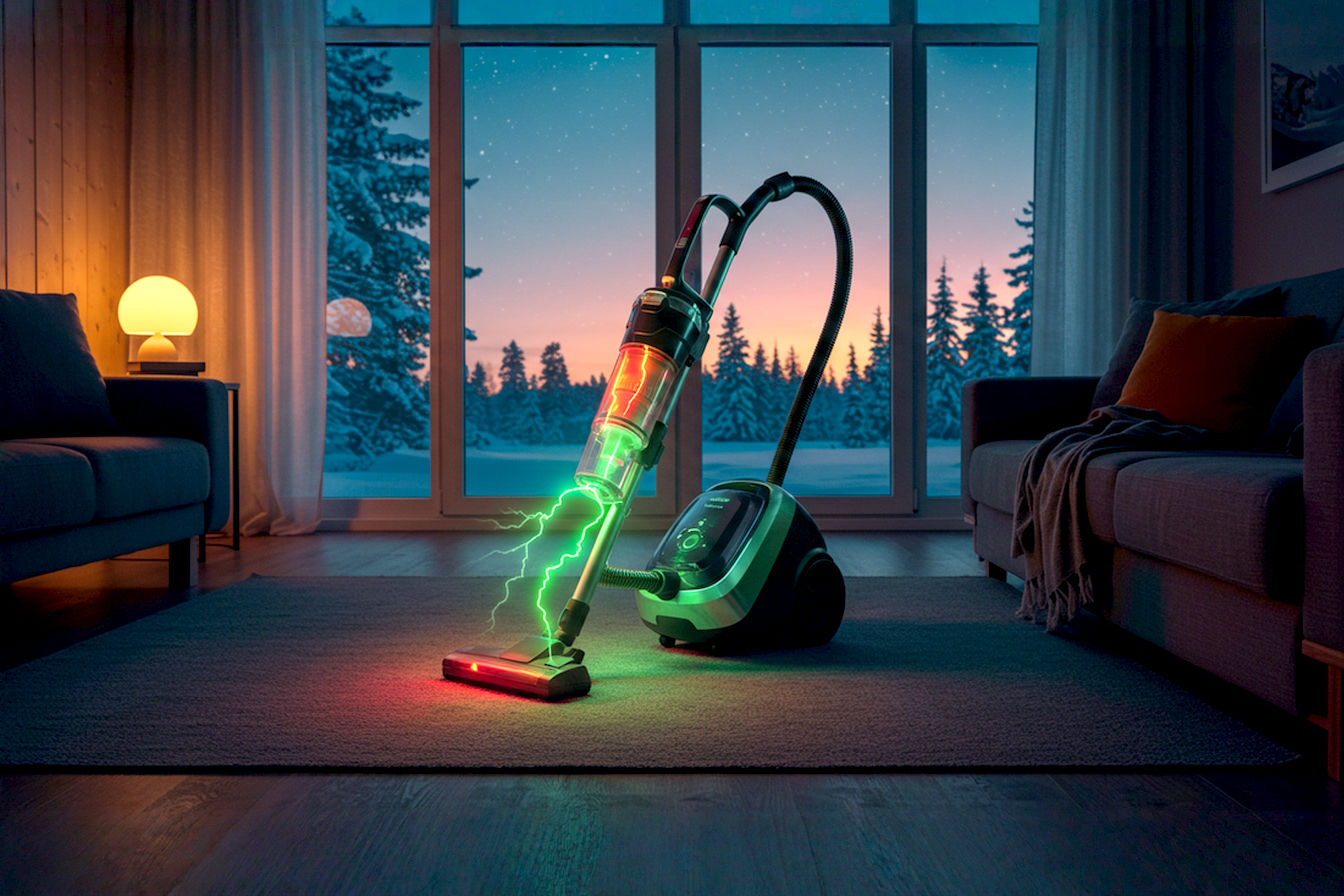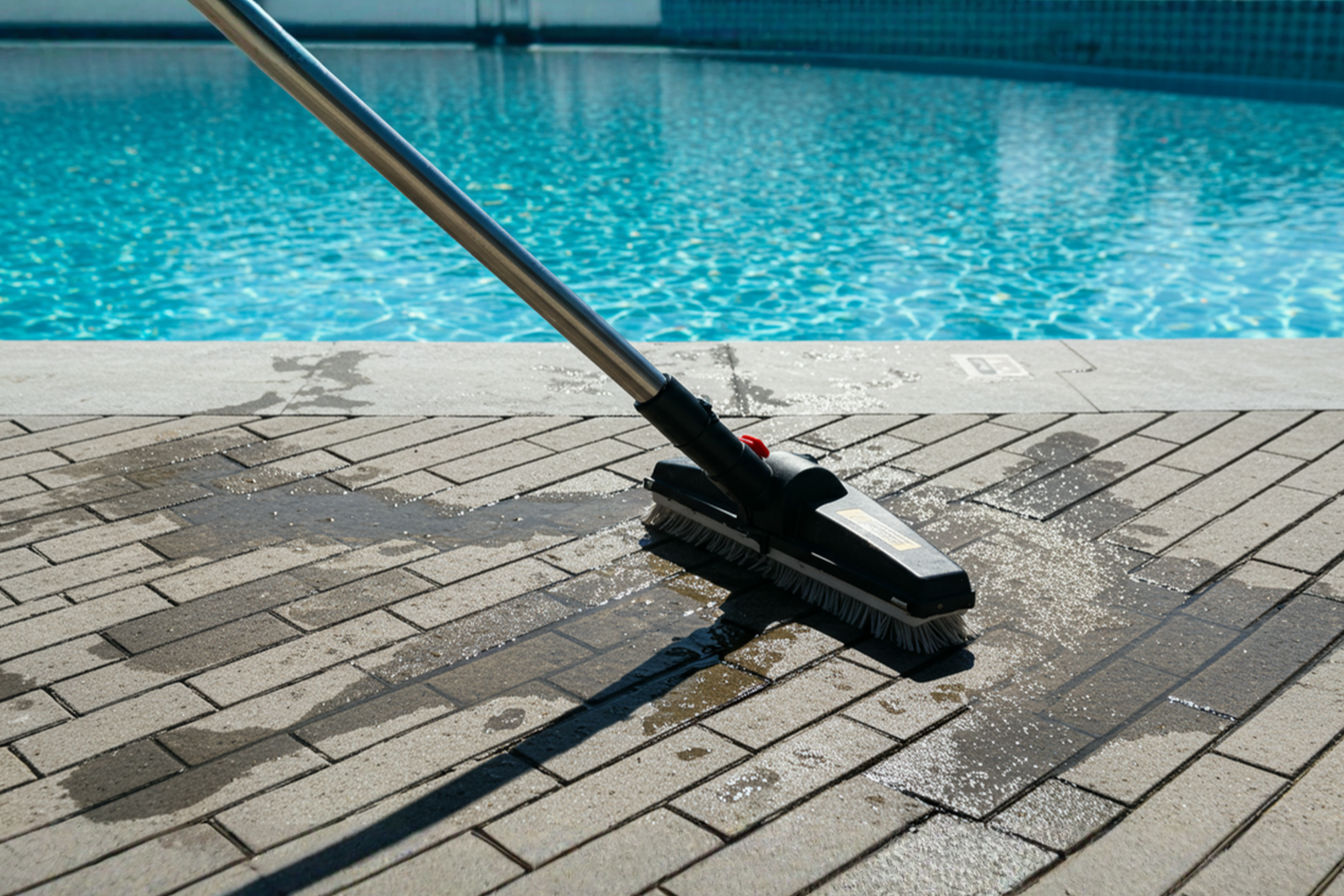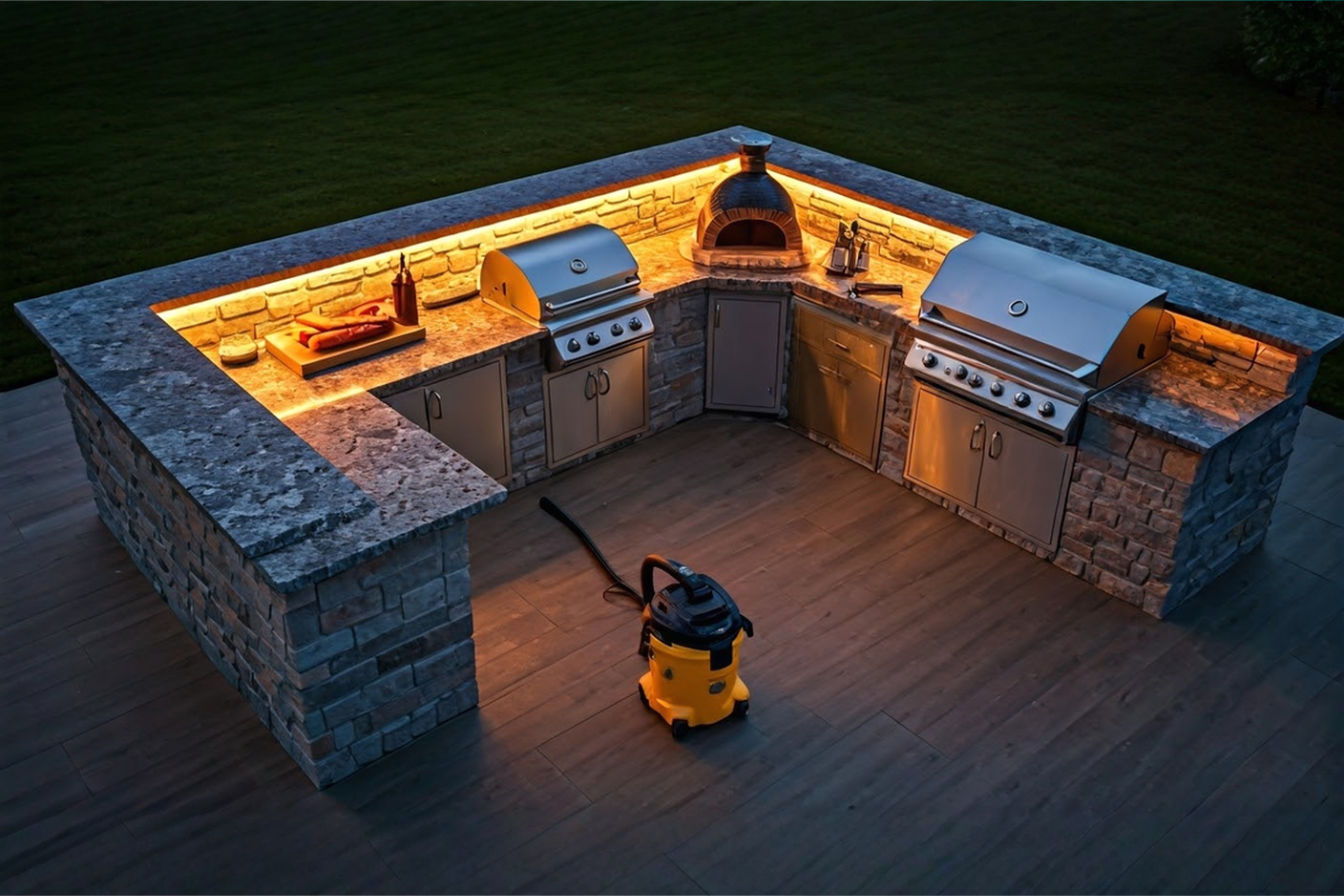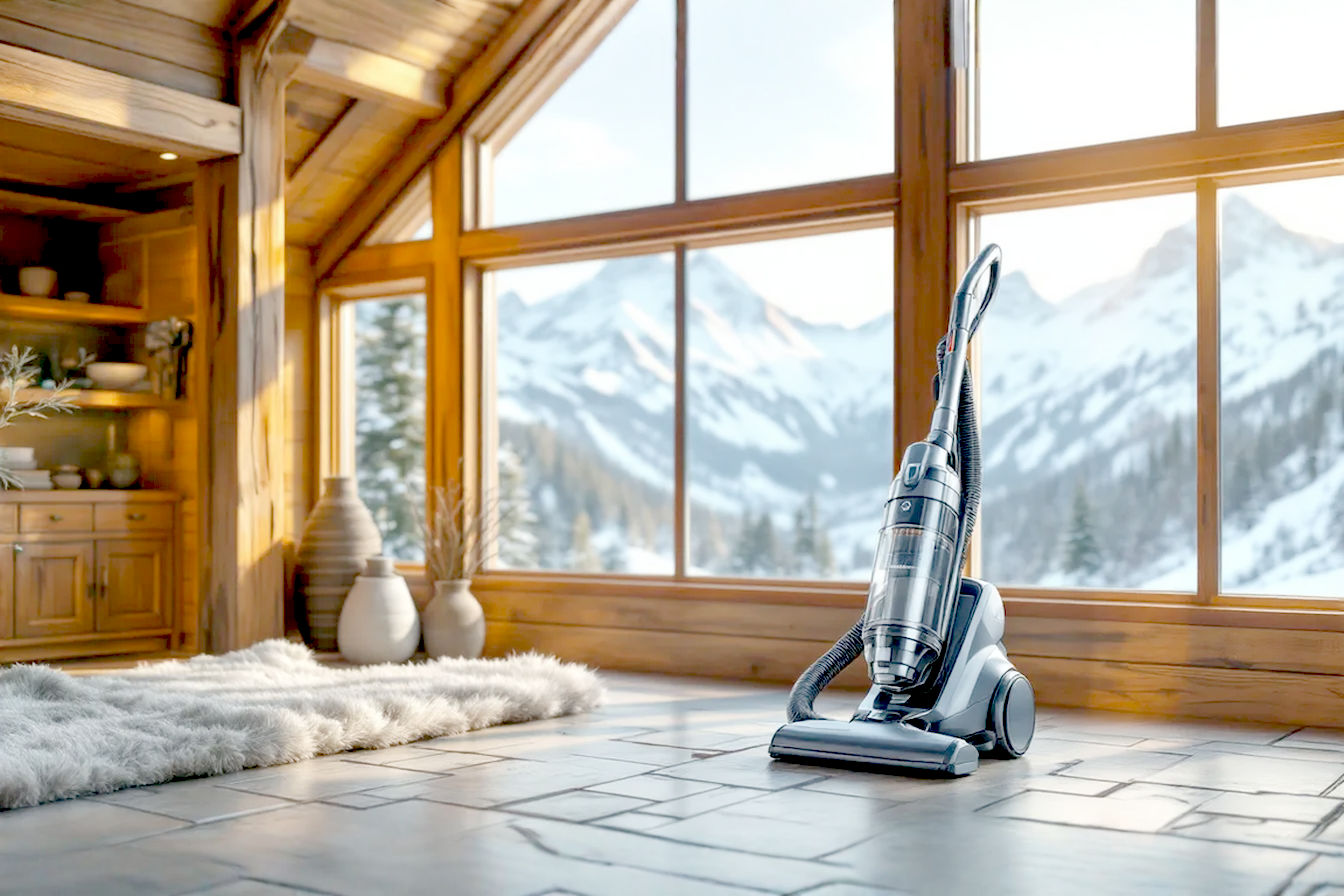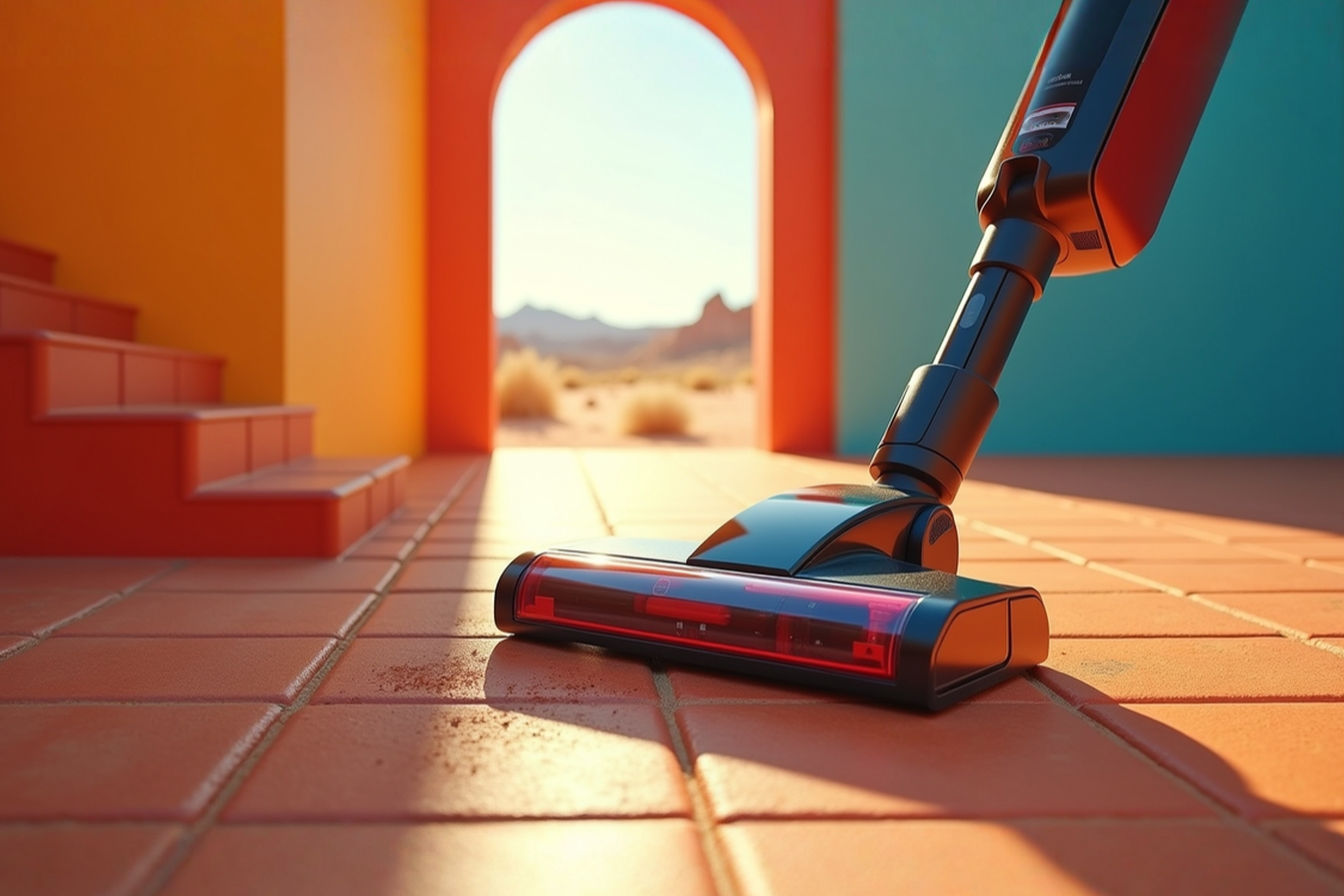Cold Climate Considerations: Vacuum Performance in Heated, Dry Winter Air
Winter’s heated, dry air creates unique challenges for vacuum cleaners, from static shocks to reduced suction. Learn the science behind these issues and practical solutions for optimal cleaning.
This post may contain affiliate links. If you make a purchase through these links, we may earn a commission at no additional cost to you.
When winter arrives, most homeowners notice subtle changes in their home environment—beyond just the need to crank up the thermostat. One common yet often overlooked change is how household appliances, particularly vacuum cleaners, begin to behave differently. That annoying static shock when you touch the vacuum handle or the strange way dust clings stubbornly to surfaces isn’t your imagination—it’s physics at work.
Vacuum cleaners, despite their seemingly simple operation, are complex machines that rely on specific environmental conditions to function optimally. The heated, dry air common in winter homes creates a perfect storm of challenges for these essential cleaning tools. From reduced suction power to increased static electricity, understanding these seasonal changes can help you maintain cleaning efficiency throughout the coldest months.
This comprehensive guide explores how winter conditions affect vacuum performance, why certain problems occur, and what practical steps you can take to overcome these seasonal challenges. Whether you’re a homeowner trying to maintain a clean living space or a cleaning professional adapting to seasonal variations, this article provides the technical insights and practical solutions you need.
The Science Behind Vacuum Performance
Basic Operating Principles
To understand why winter conditions affect your vacuum cleaner, we first need to grasp how these machines fundamentally work. Vacuum cleaners don’t actually “suck” dirt—they create pressure differentials that move air and the particles suspended in it.
At the heart of every vacuum is a motor that drives a fan, creating a pressure difference between the inside and outside of the machine. This lower pressure inside the vacuum causes higher-pressure air from your room to rush in through the cleaning head, bringing dust and debris along with it. This airflow principle remains constant regardless of vacuum type, though the specific implementation varies between models.
The efficiency of this process depends on several factors:
- The power of the motor
- The design of the fan and airflow pathways
- The quality and condition of filters
- The ambient air conditions (temperature, pressure, humidity)
How Temperature Affects Air Properties
Cold air behaves differently than warm air, which directly impacts vacuum performance. When air temperature decreases, several important changes occur:
- Air density increases in colder conditions. Denser air requires more energy to move, potentially making the vacuum motor work harder.
- Air viscosity changes with temperature. Colder air has slightly lower viscosity (it’s thicker), which can affect how it flows through the vacuum system.
- Temperature differentials between outdoor and indoor environments create conditions where components may contract or expand as they warm up.
For example, when you bring a vacuum in from a cold garage (40°F/4°C) to a warm living room (72°F/22°C), the rapid temperature change affects both the mechanical components and the electrical systems. Plastic parts may remain brittle until they warm up, and condensation can form on motor components if the temperature change is dramatic.
The Humidity Factor
Perhaps the most significant winter-related factor affecting vacuum performance is reduced indoor humidity. When outdoor air is cold, it holds less moisture. When this already-dry air is brought indoors and heated, the relative humidity drops even further—often below 30% in winter homes, compared to the ideal range of 40-60%.
This dry air creates two major challenges for vacuum operation:
- Static electricity buildup: Dry air is an excellent insulator, allowing static electric charges to accumulate instead of dissipating.
- Changed surface adhesion properties: Dust particles interact differently with surfaces in dry conditions, sometimes clinging more stubbornly due to enhanced electrostatic attraction.
The technical explanation involves comparing dielectric constants and charge dissipation rates: in humid air, water molecules in the air provide pathways for charges to slowly leak away. Without this moisture, charges remain trapped on surfaces, creating stronger electrostatic fields that interfere with the vacuum’s ability to collect dust effectively.
Winter-Specific Challenges for Vacuum Cleaners
The Static Electricity Problem
The most noticeable winter vacuum issue is increased static electricity. Those surprising shocks when you touch the vacuum handle aren’t just annoying—they signal conditions that affect cleaning performance.
In technical terms, static buildup occurs when electrons transfer between different materials and cannot dissipate quickly. During winter, this process intensifies because:
- Dry air acts as an insulator rather than a conductor
- Friction between the vacuum and carpet fibers generates more charges
- These charges have nowhere to go in the low-humidity environment
The practical impact is significant. Static electricity can cause:
- Dust particles to repel each other and scatter instead of being collected
- Fine particles to cling to vacuum components, potentially clogging filters faster
- Uncomfortable shocks for the user
- Potential electronic interference in advanced vacuum models
Research has shown that static buildup increases exponentially when relative humidity drops below 40%. At 20% humidity—common in heated winter homes—static generation can be up to five times higher than at comfortable summer humidity levels.
Temperature Differentials and Material Stress
Winter creates unique stresses on vacuum components through temperature variations. Consider what happens with:
Plastic Components: Most vacuum bodies and attachments are made from various plastics (ABS, polypropylene, etc.) that become more brittle at lower temperatures. A vacuum stored in an unheated space may be more prone to cracking if used immediately after bringing it indoors.
Rubber Seals and Belts: Rubber components lose elasticity in cold conditions, potentially affecting the critical seals that maintain suction pressure. Drive belts in upright vacuums may slip until they warm up to operating temperature.
Metal Components: Metal parts contract slightly in cold and expand when warming. This can temporarily affect precision fits between components.
A typical brush roller belt might see a 7-10% decrease in elasticity when cold, directly impacting brush rotation speed and cleaning performance until it warms up.
Impact on Filtration Systems
Vacuum filters face particular challenges in winter conditions:
- HEPA and microfiber filters may experience altered airflow patterns in very dry air
- Electrostatic filters (common in bagless vacuums) may function differently as ambient static levels increase
- Dry air can cause premature clogging as dust behaves differently
Studies by vacuum manufacturers have found that filter efficiency can drop by 5-15% in very dry winter conditions compared to optimal humidity levels. This reduction occurs because some filters rely partially on moisture in the air to trap certain particle sizes effectively.
How Different Vacuum Types Perform in Winter Conditions
Bagged vs. Bagless Performance
The winter environment affects bagged and bagless vacuums in distinctly different ways:
Bagged Vacuums in Winter:
- Generally handle static better since the bag provides some insulation
- More consistent airflow in dry conditions
- Less visible dust re-release issues
- May require more frequent bag changes as static causes dust to cling to bag interior
Bagless Vacuums in Winter:
- More prone to visible static problems
- Dust bins may collect static charges that make emptying messy
- Cyclonic action sometimes less efficient in very dry air
- Filters may clog faster due to changed dust behavior
Performance testing shows that in extremely dry air (below 25% relative humidity), bagged vacuums typically maintain 92-95% of their normal suction performance, while some bagless models drop to 85-90% efficiency until humidity is restored.
Upright vs. Canister Considerations
The physical design of vacuum types influences their winter performance:
Upright Vacuums:
- More direct contact with carpeting increases static generation
- Belt-driven brush rolls may need time to warm up for optimal performance
- Often have shorter air paths, reducing the impact of air density changes
- Generally heat up faster during use, which can help counteract cold-start issues
- Longer hoses create more opportunity for static buildup
- Separate power heads may stay colder longer if stored in unheated spaces
- Typically have more complex airflow paths that may be more affected by air density changes
- Often use different materials that may respond differently to dry conditions
Central Vacuum Systems
Built-in central vacuum systems present unique winter considerations:
- Installation in exterior walls exposes components to extreme temperature variations
- Long pipe runs can create significant temperature differences between the power unit and cleaning end
- Often have more powerful motors that can better overcome winter-related air density changes
- May experience condensation issues when drawing cold air through pipes in warm environments
Central systems with PVC piping can see a reduction in pipe diameter of up to 1/16 inch in very cold conditions, slightly altering airflow characteristics until the system fully warms up.
Robotic Vacuum Adaption
Smart robotic vacuums face their own set of winter challenges:
- Battery performance often degrades in cold conditions
- Sensor accuracy can be affected by static electricity
- Navigation systems may respond differently to changed floor conditions
- Many use lightweight materials more prone to static buildup
Testing by a leading robotic vacuum manufacturer found that their units experienced up to 20% reduced battery life when operating in environments below 60°F/15°C.
Cordless Vacuum Battery Performance
Cordless vacuums rely on battery technology highly susceptible to temperature:
- Lithium-ion batteries commonly lose 10-20% of their capacity when cold
- Charging efficiency decreases at lower temperatures
- Battery management systems may limit power output in cold conditions to protect components
- Warming up period required for optimal performance
Laboratory tests demonstrate that a cordless vacuum battery that delivers 30 minutes of runtime at 70°F/21°C might provide only 24-27 minutes when starting at 50°F/10°C.
Static Electricity: The Winter Vacuum Nemesis
The Science of Static in Dry Environments
Static electricity becomes particularly problematic during winter because of the perfect storm of conditions created in heated homes:
Technical Explanation: Static electricity results from an imbalance of electric charges within or on the surface of a material. The low humidity of winter creates an environment where these charges cannot easily dissipate. In technical terms, the dielectric properties of air change with humidity levels—dry air has higher resistivity, meaning it doesn’t conduct electricity well.
When relative humidity drops below 30%, the rate of electrostatic charge dissipation decreases exponentially. At 20% relative humidity (common in heated winter homes), a charge that might dissipate in seconds during summer could persist for minutes.
How Static Affects Performance
The accumulated static charges interfere with vacuum operation in several ways:
- Dust Behavior Changes: Electrostatically charged dust particles may repel each other or be attracted to charged surfaces rather than flowing into the vacuum.
- Reduced Pickup Efficiency: Some dust particles become so strongly bonded to surfaces through electrostatic attraction that the vacuum’s normal airflow can’t dislodge them.
- Component Interference: Static buildup on vacuum components can attract dust to places it shouldn’t go, including motor housings and electronic controls.
- User Discomfort: Repeated static shocks make the cleaning experience unpleasant and may cause users to rush or clean less thoroughly.
Research has shown that in extremely dry conditions, static forces can temporarily reduce a vacuum cleaner’s particle pickup efficiency by up to 30% for certain particle sizes, particularly those below 10 microns.
Materials Most Prone to Static Issues
Not all vacuum components generate or hold static charges equally:
- Plastic vacuum bodies (especially ABS and polycarbonate) are highly prone to static buildup
- Vinyl hoses generate significant static through friction
- Synthetic carpet fibers like nylon and polyester create more static than natural fibers
- Microfiber and electrostatic filters may perform inconsistently when ambient static levels are high
Modern vacuum design has begun addressing these issues. For instance, some premium models now incorporate carbon fiber elements or conductive threads in their construction to help dissipate static charges.
Practical Solutions for Winter Vacuum Issues
Humidity Control Strategies
The most effective approach to winter vacuum problems is addressing the root cause—low humidity:
- Use a humidifier in areas you clean most frequently. Even raising humidity from 20% to 35% can reduce static problems by more than 50%.
- Time your cleaning: Vacuum shortly after showering or cooking when humidity is naturally higher in the home.
- Consider whole-house humidification if winter dryness causes numerous issues beyond vacuum performance.
The technical target: maintaining indoor relative humidity between 35-50% will minimize static while avoiding condensation problems.
Anti-Static Treatments and Accessories
Several direct interventions can reduce static during vacuuming:
- Anti-static sprays for carpets create a temporary conductive layer that helps dissipate charges
- Dryer sheets rubbed on vacuum components can transfer anti-static compounds
- Special vacuum attachment materials designed for static reduction
- Grounding straps for vacuum equipment in extreme cases
Laboratory testing shows that quality anti-static carpet treatments can reduce static generation by 40-70% for up to two weeks after application.
Proper Grounding Techniques
Actively managing electrical charges through grounding can make a significant difference:
- Touch a grounded metal object before beginning to vacuum
- Use vacuums with grounded (three-prong) plugs when possible
- Consider adding a small ground wire to the vacuum handle in extreme cases
- Wear natural fiber clothing which is less likely to generate additional static
For commercial settings, static-dissipative mats can be placed in areas being cleaned to provide constant grounding opportunities.
Vacuum Storage Considerations
Where and how you store your vacuum affects its winter performance:
- Avoid cold garages or unheated spaces if possible
- Allow cold vacuums to warm to room temperature before use (ideally 15-30 minutes)
- Store with a small container of water nearby in storage closets to increase local humidity
- Consider using dust covers that incorporate anti-static materials
Maintenance Tips for Cold Weather Vacuum Care
Winter-Specific Cleaning Routines
Adapting your maintenance schedule for winter conditions helps maintain performance:
- Check filters more frequently during heating season
- Clean brush rolls weekly to remove hair and fibers that attract static
- Wipe down plastic components with anti-static cloths
- Empty dust containers more often as they may fill differently due to static-affected dust behavior
Testing has shown that filters which normally need changing every three months may require monthly attention during peak heating season due to altered dust distribution patterns.
Component Checks for Cold-Weather Stress
Regular inspection helps catch winter-specific issues before they become problems:
- Examine belts for signs of cracking caused by cold-temperature brittleness
- Check electrical cords for stiffening or cracking in the insulation
- Inspect rubber gaskets and seals for loss of flexibility
- Test suction power regularly to catch any performance degradation
Professional vacuum repair technicians report that belt failures increase by approximately 30% during winter months, particularly in vacuums stored in unheated spaces.
Filter Maintenance in Dry Conditions
Vacuum filters need special attention during winter:
- Consider using slightly higher efficiency filters to compensate for performance changes
- Clean or replace filters at 75% of the normal interval to maintain airflow
- Gently tap filters rather than washing when appropriate (dry conditions mean dust releases differently)
- Consider pre-filter treatments designed for static reduction
The performance difference between a clean and partially clogged filter is amplified in winter conditions—a filter at 50% capacity might reduce suction by 25% in summer but 35-40% in very dry winter air.
Protecting Plastic Parts from Cold Brittleness
Plastic components need special consideration in winter:
- Handle attachments gently when they’re cold
- Avoid impact or stress on plastic parts until they’ve warmed up
- Consider keeping frequently used attachments indoors rather than with the vacuum in colder storage areas
- Look for hairline cracks developing in heavily used components
Most vacuum plastics become significantly more brittle below 50°F/10°C. Impact resistance can decrease by 30-50% at temperatures near freezing compared to normal room temperature.
Technological Innovations Addressing Winter Performance
Anti-Static Technologies in Modern Vacuums
Vacuum manufacturers have developed various approaches to winter performance issues:
- Carbon fiber brush elements that help dissipate static charges
- Conductive pathways built into plastic components
- Specialized polymer blends that generate less static friction
- Ionizing features that actively neutralize static charges
High-end vacuum models from leading manufacturers now incorporate these technologies, with some claiming up to 80% reduction in static-related issues compared to standard models.
Climate-Adaptive Vacuum Design Features
Some premium vacuum models now include features specifically designed for environmental adaptability:
- Automatic brush height adjustment compensating for temperature-related carpet height changes
- Variable motor speeds that adjust to air density differences
- Sealed system design that minimizes the impact of ambient humidity on filtration
- Thermal compensation systems for consistent performance across temperature ranges
These adaptive features typically add 15-25% to vacuum costs but can maintain 95%+ efficiency across a much wider range of environmental conditions.
Smart Humidity Sensing Capabilities
The newest generation of smart vacuums can actually detect environmental conditions:
- Humidity sensors that adjust operation for dry conditions
- Temperature monitoring that modifies motor performance for optimal efficiency
- User alerts recommending when to employ anti-static measures
- Performance tracking that notes environmental impacts on cleaning effectiveness
While still emerging technology, these features represent the cutting edge of vacuum design, primarily appearing in commercial models but gradually making their way to consumer products.
Materials Engineered for Temperature Fluctuations
Materials science has produced components specifically designed for environmental resilience:
- Low-temperature elastomers that maintain flexibility in cold conditions
- Static-dissipative polymers for housings and attachments
- Multi-layer filter media designed to perform consistently in varying humidity
- Composite brush materials that generate less static when contacting carpet fibers
Laboratory testing shows these specialized materials can maintain 90%+ of their optimal performance across temperature ranges from 40°F to 100°F (4°C to 38°C).
Professional Insights and Recommendations
Expert Advice from Vacuum Technicians
Professionals who repair and maintain vacuum cleaners offer consistent advice based on years of winter-related service calls:
- Preventative maintenance is crucial during heating season
- Most winter vacuum problems are related to static rather than mechanical issues
- Consistent humidity control is more effective than treating symptoms
- Quality matters more in winter as better-built vacuums handle environmental stress more effectively
Service technicians report that approximately 70% of winter vacuum performance complaints relate to static electricity or related issues rather than actual mechanical failures.
Industry Standards for Cold-Weather Performance
The vacuum industry has developed specific testing protocols for cold-climate performance:
- ASTM International test methods measure vacuum performance across temperature and humidity ranges
- Consumer testing organizations now include environmental adaptability in ratings
- Manufacturer testing increasingly incorporates cold-start scenarios
- Warranty considerations sometimes differ for extreme climate usage
Industry standards now recommend testing vacuum performance at both standard conditions (70°F/21°C with 50% relative humidity) and winter conditions (70°F/21°C with 20% relative humidity) to provide more realistic expectations.
Professional Cleaning Service Adaptations
Commercial cleaning operations have developed specific protocols for winter conditions:
- Equipment rotation to allow proper warm-up periods
- Specialized anti-static treatments applied before vacuuming
- Humidity monitoring as part of cleaning protocols
- Equipment selection based on winter performance rather than just general specifications
Professional cleaners report that adjusting to winter conditions can reduce cleaning time by 10-15% compared to using standard year-round approaches.
Conclusion
The intersection of cold temperatures, dry air, and vacuum technology creates unique challenges during winter months. Understanding the science behind these issues—from static electricity buildup to material stress—gives homeowners and cleaning professionals the knowledge needed to maintain cleaning effectiveness year-round.
While winter conditions will always present challenges for vacuum performance, modern technology and proper maintenance can mitigate most issues. The key takeaways for optimal winter vacuum performance include:
- Maintain indoor humidity levels between 35-50% when possible
- Allow cold vacuums to warm up before use
- Consider vacuum type and features when purchasing for cold climates
- Implement regular winter maintenance routines with more frequent filter checks
- Utilize anti-static treatments when humidity control isn’t possible
As vacuum technology continues to evolve, we’re seeing more climate-adaptive features that automatically compensate for seasonal variations. However, even the most advanced vacuums benefit from proper storage, maintenance, and environmental awareness.
By understanding how your vacuum interacts with winter conditions and implementing the strategies outlined in this guide, you can maintain cleaning efficiency regardless of the weather outside. Your vacuum—and your home’s cleanliness—will thank you.

